For many years, I wrote about improvising in the kitchen. My basic approach was to show people how to ‘see’ the basic structure of a recipe. Once you understood its essential workings, you could play with all sorts possibilities, depending on what you had on hand or were inspired to do. It’s pure liberation.
So it was a joy to see frequent contributor Susan Dworski echo this approach (unsolicited) in a recent email:
I’m very big on taking the skeleton of a recipe and wrestling it into a meal depending on what’s in the larder. The idea of imperfection being OK is what it’s all about.I have a minimal – read pathetic – number of kitchen tools and gadgets, and like using my hands as a low-tech Cuisinart. Much easier to clean up afterwards, too.…I love to cook and concoct and chat. I look forward to Sunday as a time to strap on my apron and experiment. I open the front door to let the cooking smells drift out, and friends know that if they drop by they’ll probably snag some takeaway for dinner or dessert. An ad hoc, moveable feast that requires no planning; a win-win for everyone.
She included her notated riff on food writer Claudia Roden’s recipe, Grape Leaves Stuffed with Rice, Raisins and Pine Nuts from Arabesque: A Taste of Morocco, Turkey, and Lebanon. Here’s Susan’s great improv (along with Roden’s original recipe and some few annotations and ideas).
“Whaddya gonna do with all that old, overgrown chard?” Nina sneered over my garden fence. “I pulled mine out ages ago!”
Here’s the original recipe for Claudia Roden’s Grape Leaves Stuffed with Rice, Raisins and Pine Nuts from Arabesque: A Taste of Morocco, Turkey, and Lebanon. Annotations are in italics.
Stuffed grape leaves were served at the court of King Khusrow 11 in Persia in the early seventh century. Their popularity spread through the Muslim world when the caliphs of Baghdad adopted Persian cooking traditions, while the Ottomans introduced them throughout their empire. There are numerous versions of this delicacy today, which is popular in every country throughout the Middle East. The following, with raisins and pine nuts, is a Turkish version. It is served cold.
Short-grain or risotto rice is used because the grains stick together. Grape leaves can he bought preserved in brine and vacuum-packed, but if you can get hold of young fresh tender ones, do use them. They freeze well raw, wrapped in foil.
From Sally: The basic savory rice filling can be used to stuff all manner of vegetables, from hollowed out tomatoes and peppers to zucchini and eggplant.
From Susan: I found the rice not quite cooked through (perhaps because I used a Japanese rice) and would probably use leftover cooked brown or white rice instead next time and reduce the cooking time. I also added some cooked turkey sausage crumbles and a little chopped string cheese in the filling. (You can probably clean out the fridge for the filling.) I also wonder if blanching the very curly chard leaves first and cooling them might make for easier rolling and tighter rolls.
Serves 8
1/2 pound grape leaves or Swiss chard
Rice, Raisin and Pine Nut Filling:
2 large onions, finely chopped
2/3 cup extra virgin olive oil
2 tablespoons pine nuts
1 1/2 teaspoons tomato paste
1 cup short-grain or risotto rice
2 tablespoons currants or tiny black raisins Susan used dried cranberries
Salt and black pepper
1 teaspoon ground allspice
2 to 3 tablespoons chopped mint
2 to 3 tablespoons chopped dill
2 tomatoes, sliced
l teaspoon sugar
Juice of l lemon, or to taste
If using grape leaves preserved in brine, remove the salt by putting them in a bowl and pouring boiling water over them. Make sure that the water penetrates well between the layers. Leave them to soak for 10 minutes, then rinse in fresh, cold water and drain.
If using fresh grape leaves, plunge a few at a time in boiling water for a couple of seconds only, until they become limp, then lift them out. Sally recommends cooling them down under cold running water and spinning them dry in salad spinner to remove excess water. Cut off and discard the stalks. For chard leaves, try rolling one and see how flexible it is to decide whether to blanch or not. Cut the large, center vein out with a small paring knife, and any others that seemed too hunky. Choose flat leaves if possible.
For the Rice, Raisin and Pine Nut Filling, fry the onions in 3 tablespoons of the oil until soft. Add the pine nuts and stir until they are golden. Stir in the tomato paste, then add all the rest of the ingredients down to and including the chopped dill. Mix well.
On a plate, place the first leaf, vein side up, with the stem end facing you. Put one heaped teaspoonful of filling in the center of the leaf near the stem end. Fold that end up over the filling, then fold both sides toward the middle and roll up like a small cigar. Squeeze the filled roll lightly in the palm of your hand. Fill the rest of the leaves in the same way. This process will become very easy after you have rolled a few.
Line the bottom of a large, heavy-bottomed pan with tomato slices and any leftover, torn, or imperfect leaves, then pack the stuffed leaves tightly on top. Mix the remaining olive oil with 2/3 cup water, add the sugar and lemon juice, and pour over the stuffed leaves. Put a small plate on top of the leaves to prevent them from unrolling, cover the pan, and simmer very gently for about l hour, until the rolls are thoroughly cooked, adding more water occasionally, a small coffee cupful at a time, as the liquid in the pan becomes absorbed. Let the dolmas cool in the pan before turning them out.
All photos by Susan Dworski
Related posts: how to: crispy kale chips (slow + fast methods)
2 great end-of-the-season cherry recipes
15 improvised kitchen tools for summer house cooking
3 crazy-simple summer desserts from ‘a new way to cook’

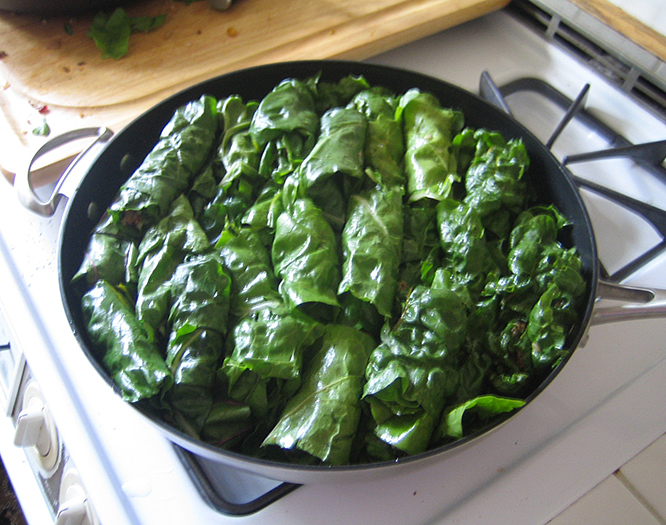
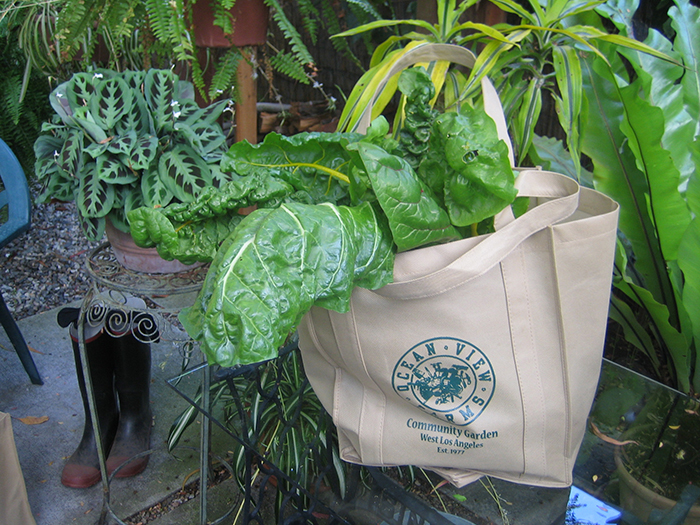
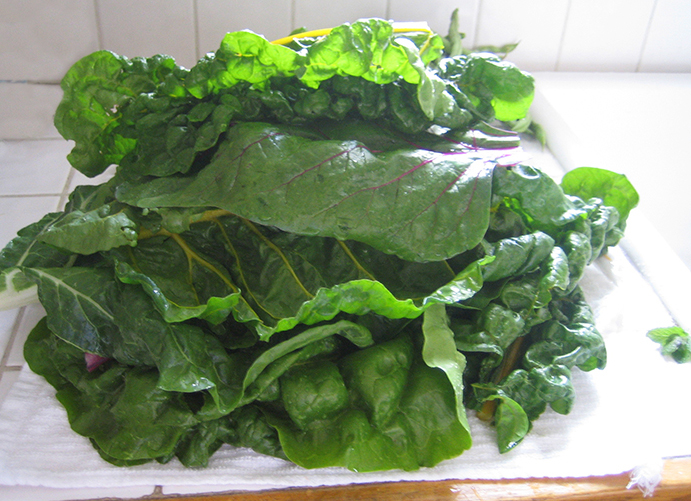
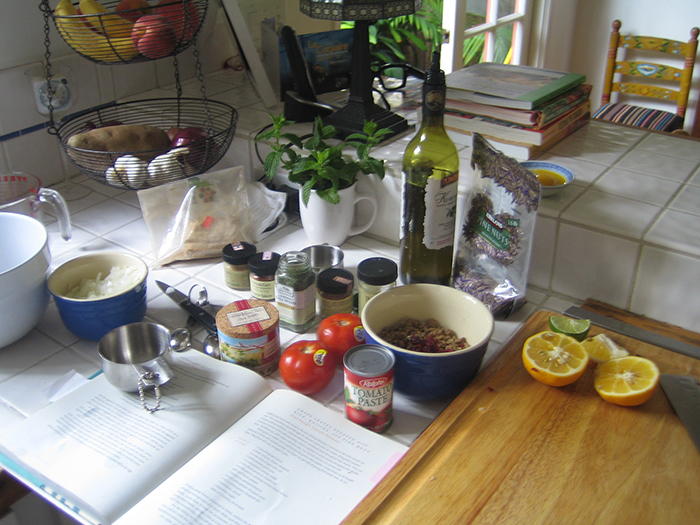

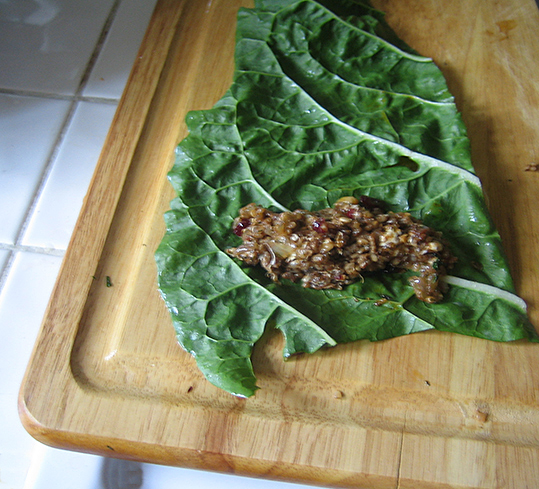
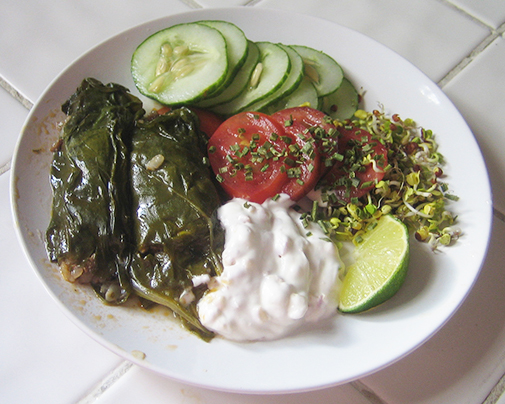
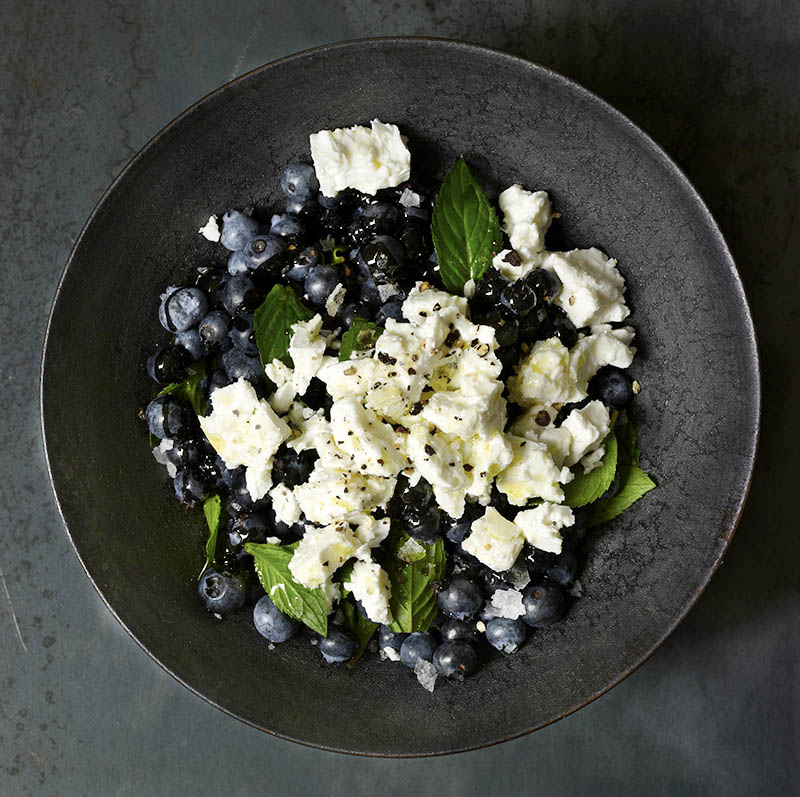
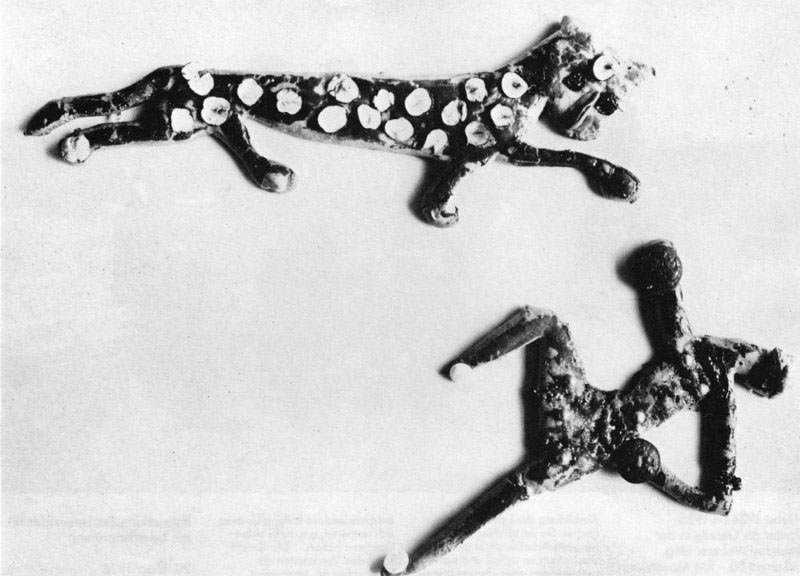

I had what maybe I could call a Sally-&-Susan moment a couple weeks ago when I returned from a trip away to find my garden seedlings overshadowed by much more vigorous purslane, lamb’s quarters, and pigweed teenagers. Every morning till the bed was “weeded,” I’d go out and harvest them. They were delicious wilted in olive oil with garlic with an egg poached on top. I even made pesto with them! I’m letting some stay so they’ll reseed for next year. A blessing of weeds.
This looks sensational! Thanks for the recipe and wonderful photos —
This looks amazing and I can’t wait to try it out. Great photos too! I love swiss chard but am not a creative cook, so I usually end up just stir frying it with garlic. I guess it tastes so good, so I don’t usually do more. Thank you for this inspiring article. I’ll probably follow your directions literally for now but will hopefully become more confident with improvising. I’m going to make this tomorrow! Recently, I was getting ready cook chard my usual way when I got an email from Purple Kale’s 2 minutes to dinner blog with a unique way to cook chard – by making it the primary ingredient in a simple but delicious frittata. Like you, Purple Kale helps inspire me to be more creative and improvise with what I have in the fridge and the farmers market. Thanks to you both, I’m even more in love with swiss chard.